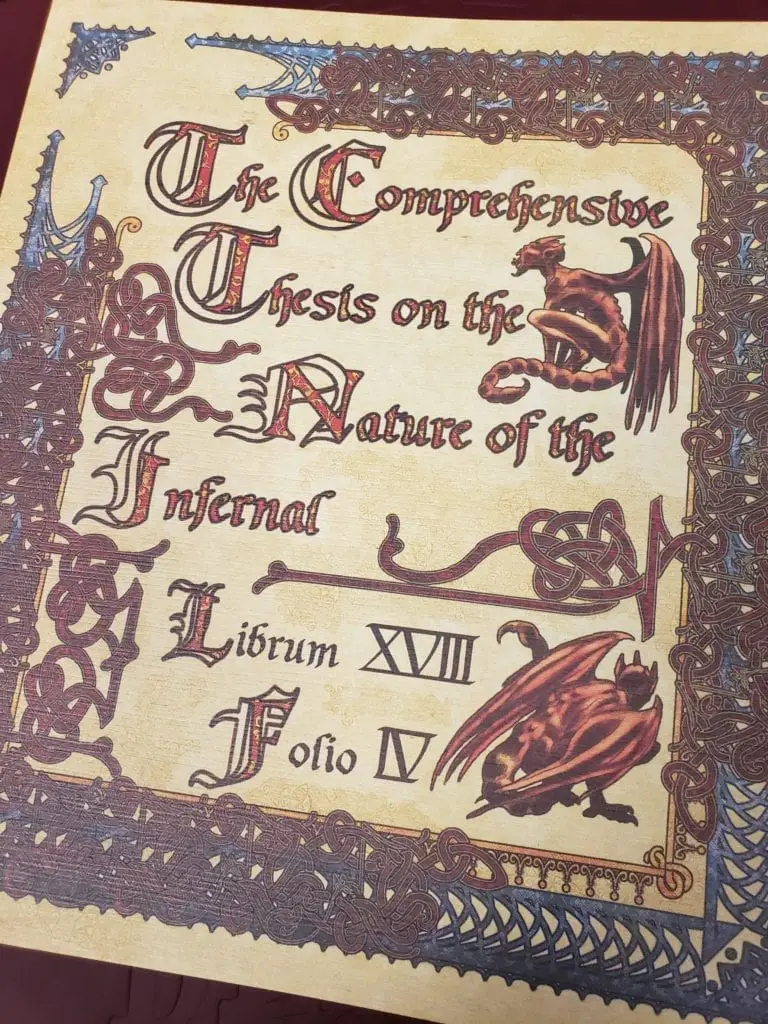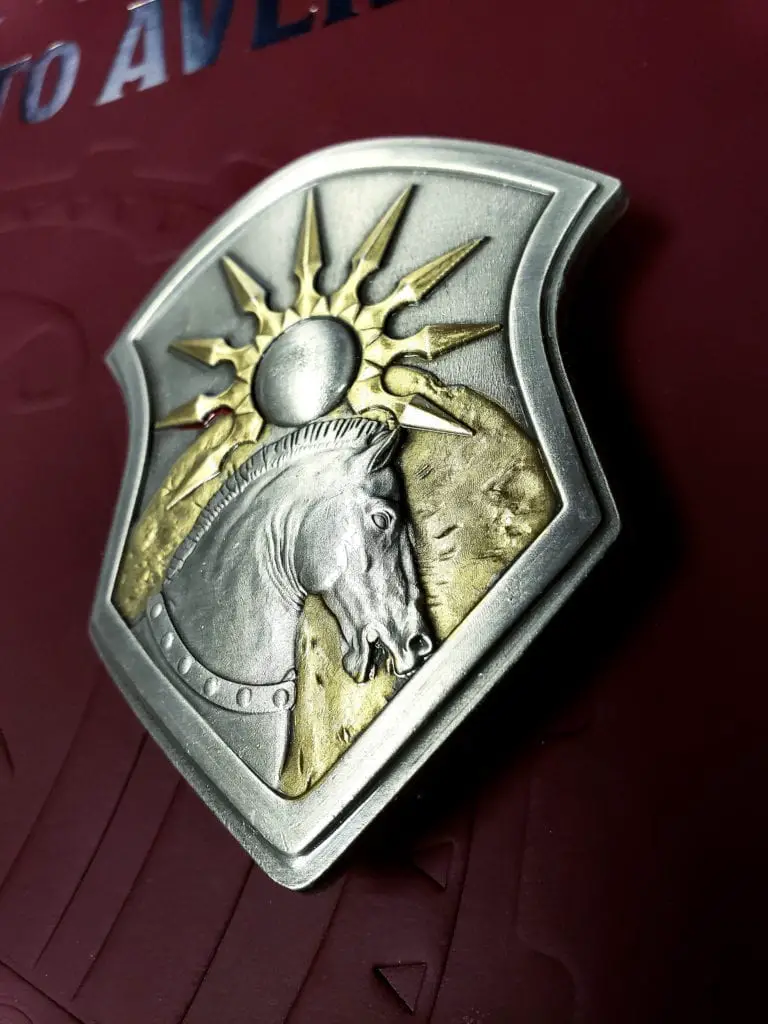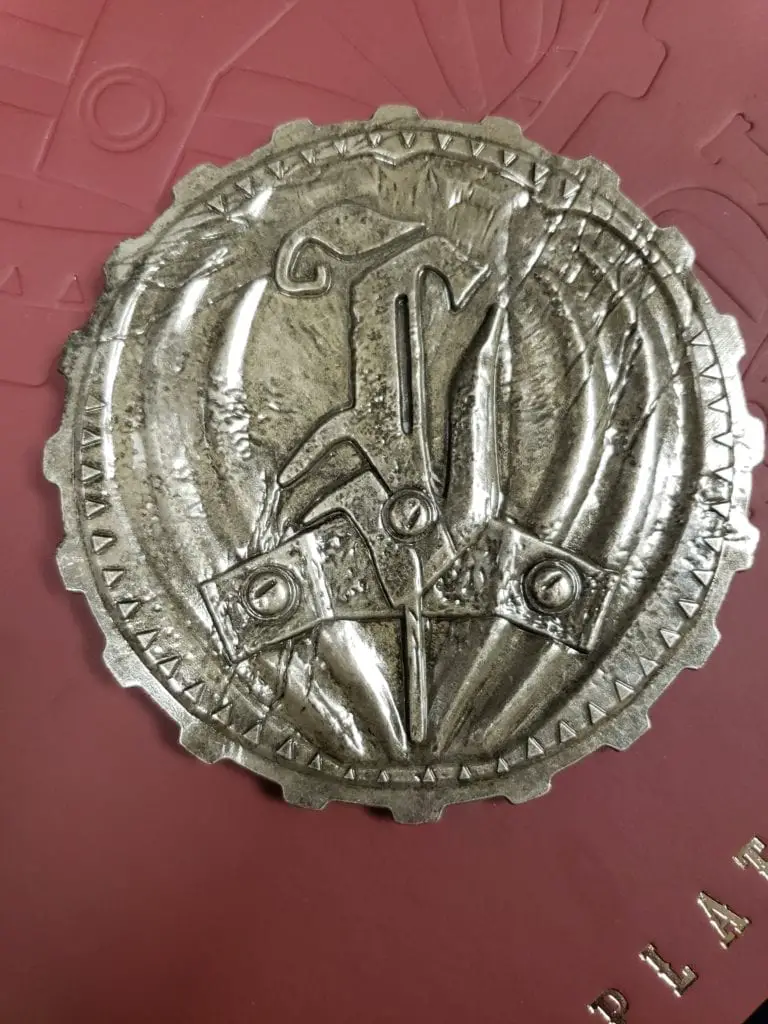It’s an age-old debate within tabletop circles. How much do players need to feel immersed in their game? On one end are the pen and paper purists, who believe wholly in the theater of the mind that makes up an essential part of all roleplaying, where all you need is an imagination and a good story to have an adventure. On the other end are the miniature mavens, the map makers, the handout heroes; the people who revel in their senses. They not only love a map for their battles and minis for their characters, but they also love epic battlegrounds to battle through. Each part of a dungeon has its own soundtrack, its own smell, its own detailed illustration or even 3-D model. Even the clues and items the PC’s find are physically made and stressed to look authentic.
I never understood people in the latter group.
As both a DM and a player, I’d always fallen into the first camp. Maybe it was just an arrogant belief in my own imagination or, as a DM, in my abilities as a storyteller. Maybe it was a lack of resources, considering most of my formative tabletop years were my middle and high school years. Maybe it was plain laziness. But no matter the underlying reason, I never quite “got” the point of all of the big flashy things. Hell, I never even really used minis (D&D Fourth Edition and its obsession with them didn’t help). But that changed once I got my hands on a Beadle & Grimm’s box. With the maps, images, and other little trinkets (henceforth called “feelies”) included in their boxes, I realized some of the things I’d been missing out on at the table.
Enhancing, Not Replacing, Imagination

As a player, being able to physically hold the things I’ve found or am given is actually a very gratifying experience. The best example isn’t actually the little badges or trinkets included in the different boxes (although they are very neat), it’s the in-game documents. D&D books, and most tabletop RPG’s, make references in adventures to handouts for the DM to print out or replicate for the players (the quality of which depends on the DM’s time and resources). I’d never really held truck with them until the B&G boxes, but after them I discovered they’re borderline essential. There are a lot of in-game notes, flyers, books, maps etc. that characters get and then just…never use again, and god forbid you have to actually remember what a bit of info said. With physical papers, it actually feels like you’re pulling a document out of your bag to help solve a puzzle or connect the dots on an investigation.
The key with any of these little additions is that they don’t limit your ability to imagine, as pen and paper purists might claim. Instead, they make it easier to immerse yourself in the world by filling in the basic stuff and letting you focus on everything else. Why waste time trying to remember random info when you, like your character, have that info on a sheet?
Make A Time Save

On the other side of the screen, these little things save up so much time and energy as a DM. Obviously, when you’re running something like Ghosts of Saltmarsh or Descent Into Avernus, you’re also benefiting from a preset adventure and such. Even then, being able to pass things out to players so they can more easily engage with the world makes a DM’s job so much easier. You don’t have to go into needless details because they have the page in front of them, or the badge, or even the big-ass soul coin they just earned. Plus, Beadle & Grimm’s adds in lots of other little things to help out DM’s, my favorite being the info cards that sit on the DM Screen so that players see exactly what the hell they’re fighting while you see it’s stats without having to flip back and forth between the appendices and the main plot or, god forbid, between splatbooks.
Even if you’re not doing a pre-gen, or not using a Beadle & Grimm’s edition, these little touches do a lot for the game. Using these things has really been a lesson in “less is more,” and even if you don’t use as much or even do as much detail, actually creating the totems and things from your campaign can be a big help. Hell, even a rudimentary thing printed off in black and white can go a long way to taking your game to the next level.

The moral of the story is this: find your balance. There’s no reason to be a purist for the pen and paper, but you should in no way feel that you have to go all out in your DMing (nor should you expect it as a player). Even the Beadle & Grimm’s Editions aren’t nearly as hardcore as they could be, but you don’t even need them. Stay within your means as best you can, or maybe ask your players to chip in. The key is making sure your story is the best it can be, that your adventure is as epic as it can be, and that everyone at the table has as much fun as humanly (or elfishly, or dwarfishly, or goblinishly) as possible.

